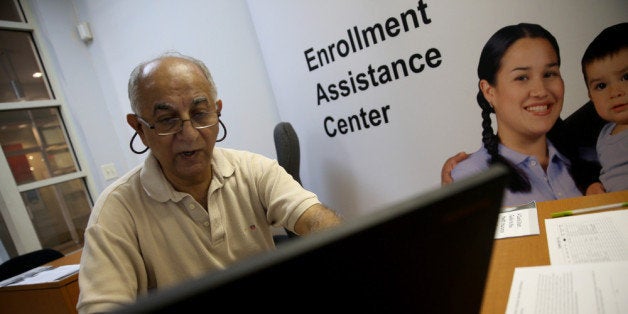
The Obamacare rollout is like moving houses: Everything is new and unsettled, tempers fray, and for a while all you can see is chaos before you unpack and find the right corner for your houseplants.
Ultimately, though, the promise of health reform is to minimize the upheaval of moves in the long run by ensuring continuity of care. No longer will a pre-existing condition or the loss of a job force you to go without coverage or find a different network of doctors with a different set of coverage benefits. This is a good thing: These gaps lead to worse health and less efficient care. Just imagine losing insurance in the middle of chemo or a pregnancy.
In order to meet this promise, however, health policy experts must find a way to address the phenomenon known as "churning," or the repeated enrollment and disenrollment of individuals in programs such as Medicaid and CHIP, which have strict income eligibility limits, as their incomes rise and fall. Churning is a serious problem in low income populations, where employment often comes in spurts in the form of part-time work or overtime hours.
The threat of churning cuts to the heart of efforts to improve continuity of coverage. But some states have used churning as a pretext for pushing a political agenda, resulting in poor solutions.
For example, some conservative state governors have proposed "premium assistance" for people newly eligible for Medicaid (most non-care-giver adults making roughly $16,000 or less a year). Their plans would try to reduce churning by using public money to subsidize private coverage. The argument is that if individuals in public programs are already enrolled in private plans, they will have simpler transitions when they move on and off public programs.
This idea has already been tried, and the results are mixed at best. Medicaid, for example, already has some limited premium assistance. It may have some virtues -- for example, there are some reports that it increases the available provider network (having more doctors to choose from is a good thing).
But it also has serious drawbacks. Because private insurance is more costly than public insurance, it's an inefficient use of public funds and, for many consumers, it worsens access to care. Individuals end up with less covered services and higher cost-sharing in the private plan or, in some states, a confusing mix of two insurances -- the private coverage and separate Medicaid coverage for the critical Medicaid services that are not offered by the private plan.
Even if there weren't serious issues raised by premium assistance, the larger picture makes it clear that conservative lawmakers aren't really concerned with churning. Their real interest lies in supporting private market coverage.
How can we know? Just look at all the things they are simultaneously proposing that will dramatically worsen churning. Iowa, for example, will be charging premiums (which are normally illegal under Medicaid law) to individuals living at half of the poverty level -- that's less than $6,000 a year. Charging premiums to poor people is a well-documented way to destroy continuity of coverage. For example, in 2003, Oregon experimented with charging sliding scale premiums ($6-$20) and higher copays on some people living below poverty. Nearly half the affected enrollees dropped out within the first nine months after the changes.
Remarkably, Pennsylvania recently went even further, requesting permission to charge premiums to people in poverty, dis-enroll individuals who don't pay on time, and then lock them out of coverage for three to nine months.
So, how could we truly improve continuity of coverage? For starters, don't charge people living in poverty a monthly premium that we already know they can't afford. This seems so obvious, and yet some states have requested permission to charge people in poverty premiums. Even though surcharges of this kind are normally prohibited by Medicaid law, and even though it defies all logic and participants' stated objectives, the much-beleaguered HHS has gone out of its way (and ignored precedent) to approve some requests.
An even better way to preserve continuity of coverage is to not kick people off the public program once they do enroll. Medicaid law requires enrollees to regularly renew their enrollment, and so states mail off letters requiring a return response. This may sound fine in theory, but in practice it's a different story. People in poverty have stressful lives, sometimes their address changes multiple times in a year (so the letter never arrives), and there are often literacy issues. We should not be surprised that the system has problems with continuity of coverage.
The solution is simple: People should stay enrolled until we know they're not eligible. The default should be that no reply to a letter means coverage continues. The new health reform system links program eligibility to wage and tax information, so it's not like we won't notice if Bill Gates is enrolled in a poverty program.
Moving is a messy process at any level. We'll do the system -- and millions of people -- a favor if we can figure out real solutions to keep it from happening too often.